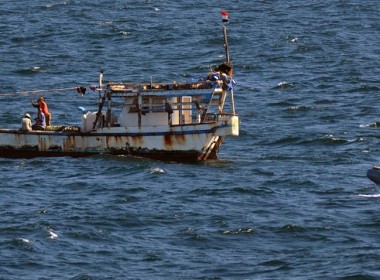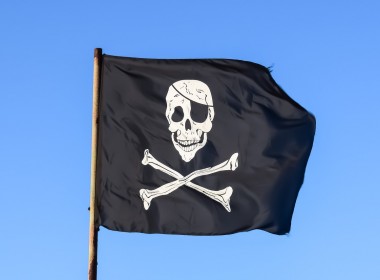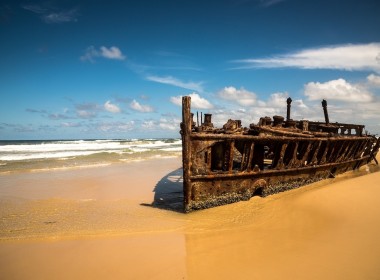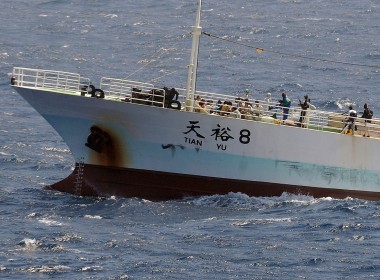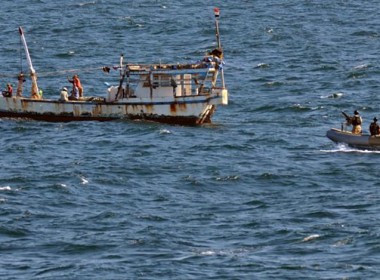FEATURE: Piracy resurgent off Somalia?
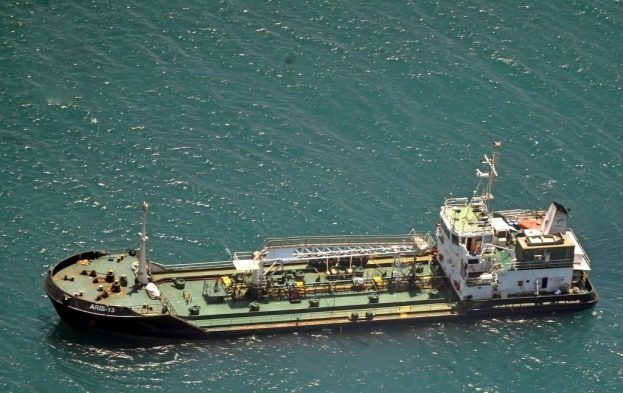
Following more than four years with no reported piratical attacks off the Somalian coast , the hijacking of the Comoros-registered, UAE-owned bunkering tanker Aris 13 on March 13, sent shock waves through the shipping community.
The 1,200-tonne ship, with a crew of eight Sri Lankans, was on passage from Djibouti to Mogadishu when it was seized as it approached the Socotra Gap, which lies between Socotra Island and Somalia. The hijacking was carried out by a group of about 30 armed pirates in at least two fast boats. The pirates are reportedly connected with the powerful Marten/Siwaaqroon sub-clan, and are led by Jacfar Saciid Cabdulaahi, reputedly a notorious pirate.
According to shipping industry sources, the tanker was particularly vulnerable as it had a low freeboard, and was proceeding very slowly, about 10 nautical miles off the northern tip of Puntland, a semi-autonomous region in the northeast segment of Somalia. The sources say that Aris 13 was preparing to transit the Socotra Gap, in order to save time and fuel. This is, apparently, a common practice.
The ship was subsequently moved, under pirate control, to the Puntland coastal town of Caluula, with the pirates demanding an unspecified sum for the release of vessel and crew.
The hijacking was monitored closely by intelligence and communications specialists on board, and helicopters launched from, the Spanish amphibious warfare vessel Galicia, flagship of the European Naval Force (EUNAVFOR). This force is part of UK-based Operation Atalanta, the EU-mandated anti-piracy operation.
EUNAVFOR provided the Puntland Maritime Police Force (PMPF), and the Puntland authorities, with real time intelligence as the situation evolved. A maritime security industry source, with extensive connections in Puntland, told Baird Maritime that clan members, and government officials, were all greatly alarmed at the prospect of foreign aid, and investment, being halted by a return to maritime lawlessness. They therefore responded rapidly, taking co-ordinated action to bring the incident to a close.
Clan elders led forceful negotiations with the pirates, while PMPF units surrounded the hijacked vessel. There was at least one exchange of fire between pirates and the PMPF, and on March 16, Aris 13 and its crew were released. The tanker then proceeded to Bosasso under PFMF escort. It is unclear whether or not any ransom money was paid.
Did this incident, as has been widely reported, mark a resurgence in piracy off Somalia – a criminal activity which is widely thought to have been extinct for almost five years?
Certainly some well-established maritime security operatives believe that a number of factors have been combining to increase the piracy risk. These are, the cessation last year of NATO’s Ocean Shield regional anti-piracy operation, the reduction in the number of EUNAVFOR regional assets, the decline in the use of armed guards on merchant ships on passage off Somalia, and the failure of some ships to adhere to anti-piracy Best Management Practices.
In truth though, the piracy risk has never fully abated. There were a number of reported failed attacks on merchant and fishing vessels in 2016, including 11 which were deterred by armed ship guard teams. Also, a fishing vessel, Soraj, was hijacked in 2015.
It is therefore certain that ships executing passages off Somalia will continue to have to exercise great vigilance.
Puntland Maritime Police Force
The PMPF was formed in 2010, having been preceded by the Puntland Coast Guard. With a reported working strength of about 1,000, its declared roles are combating piracy, securing the distribution of humanitarian assistance, and the enforcement of coastal fishing and navigation laws. Initial training, financed by the UAE, was provided by British and American private maritime security companies. Supplementary training was given later by the Japan Coast Guard, and EUNAVFOR.
Current equipment includes three large RHIBs, equipped with heavy machine guns, and a number of small boats. The PMPF also has a land presence in coastal areas, as well as a significant maritime air arm. The aviation component consists of an AN-26 maritime patrol aircraft, three crop spraying planes modified for marine surveillance and fire support roles, and a helicopter.
The force has been credited in recent years with some successes, both in disrupting illegal fishing, and reducing piratical activity in Puntland waters.


